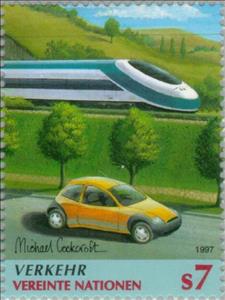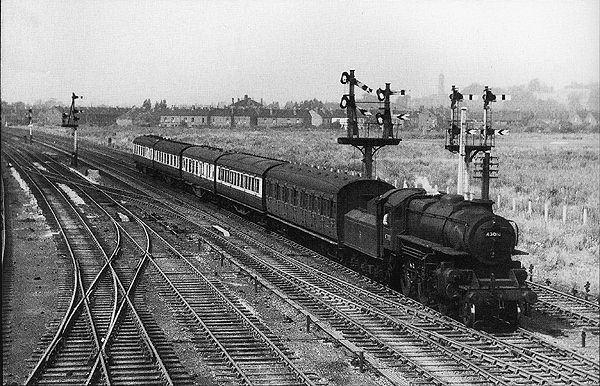Stamp: Traffic (UNO Vienna 1997)
Traffic (UNO Vienna 1997)
01 January (UNO Vienna ) within release Traffic goes into circulation Stamp Traffic face value 7 Austrian schilling
| Stamp Traffic in catalogues | |
|---|---|
| Michel: | Mi:NT-WN 235 |
Stamp is square format.
Also in the issue Traffic:
- Stamp - Traffic face value 7;
- Stamp - Traffic face value 7;
- Stamp - Traffic face value 7;
- Stamp - Traffic face value 7;
- Stamp - Traffic face value 7;
|
Data entry completed
50%
|
|
|---|---|
| Stamp Traffic in digits | |
| Country: | UNO Vienna |
| Date: | 1997-01-01 |
| Perforation: | 14 x 14½ |
| Format: | Stamp |
| Face Value: | 7 Austrian schilling |
| Print run: | 376000 |
Stamp Traffic it reflects the thematic directions:
A vehicle (from Latin: vehiculum) is a mobile machine that transports people or cargo. Typical vehicles include wagons, bicycles, motor vehicles (motorcycles, trucks, buses), railed vehicles (trains, trams), watercraft (ships, boats), aircraft and spacecraft. Land vehicles are classified broadly by what is used to apply steering and drive forces against the ground: wheeled, tracked, railed or skied. ISO 3833-1977 is the standard, also internationally used in legislation, for road vehicles types, terms and definitions.
A car is a wheeled, self-powered motor vehicle used for transportation and a product of the automotive industry. Most definitions of the term specify that cars are designed to run primarily on roads, to have seating for one to eight people, to typically have four wheels with tyres, and to be constructed principally for the transport of people rather than goods. The year 1886 is regarded as the birth year of the modern car. In that year, German inventor Karl Benz built the Benz Patent-Motorwagen. Cars did not become widely available until the early 20th century. One of the first cars that was accessible to the masses was the 1908 Model T, an American car manufactured by the Ford Motor Company. Cars were rapidly adopted in the United States of America, where they replaced animal-drawn carriages and carts, but took much longer to be accepted in Western Europe and other parts of the world.
Railways - Transportation system made up of metal rails which is designed to allow trains to maneuver on the tracks from one location to the next.
Transport or transportation is the movement of people, animals and goods from one location to another. Modes of transport include air, rail, road, water, cable, pipeline and space. The field can be divided into infrastructure, vehicles and operations. Transport is important because it enables trade between people, which is essential for the development of civilizations.




